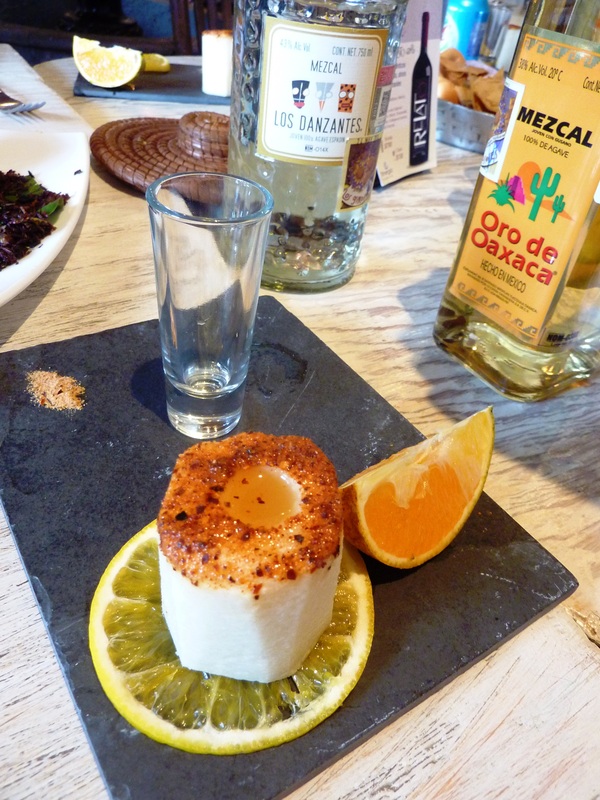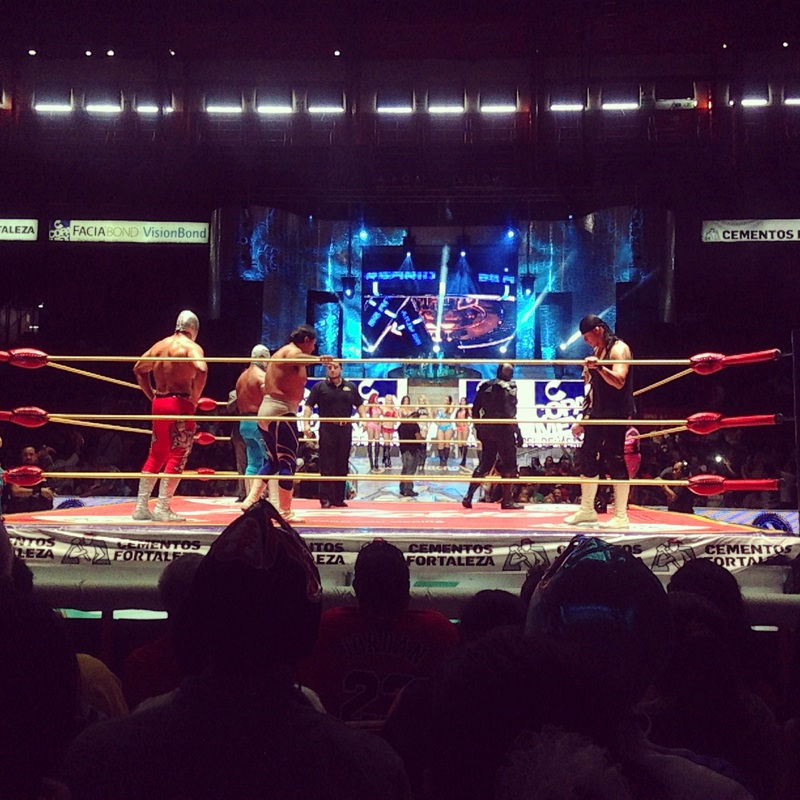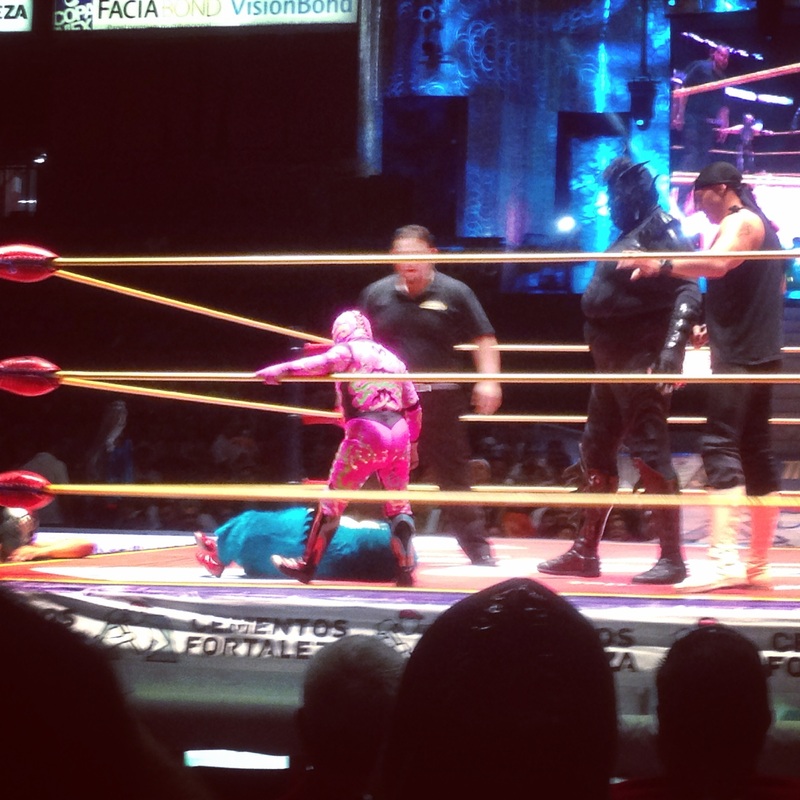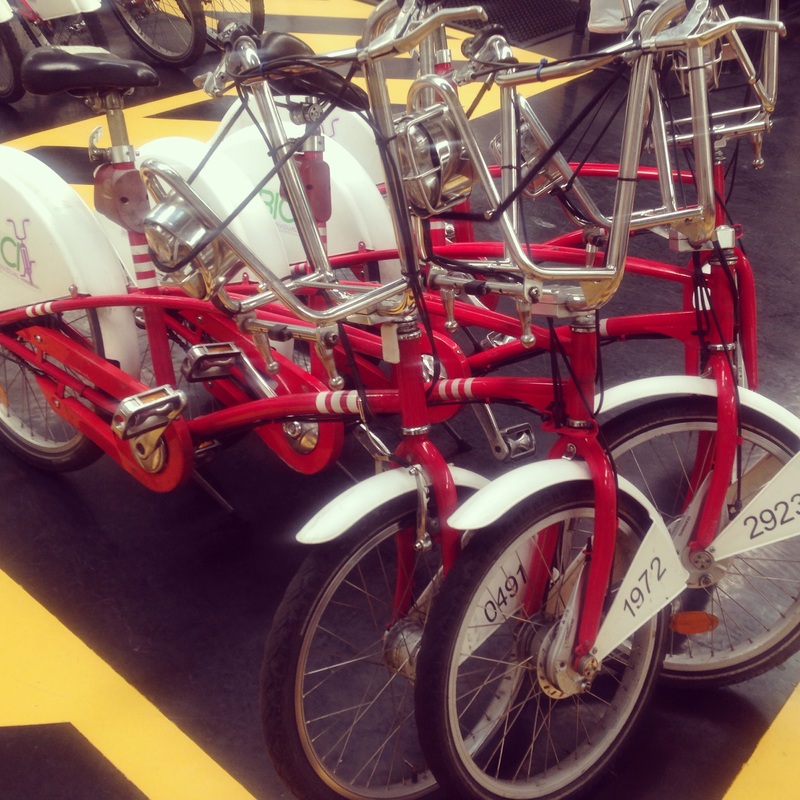Think Mexico City, think scale. Mexico’s capital is the largest in the Western Hemisphere and possesses a population of 21.2 million people, making it the 2nd most populated city in the world. Towering at over 7000ft above sea level and with over 300 separate neighbourhoods and 16 boroughs, its metropolis dwarfs London. This enormity of scale is part of Mexico City’s fabric. The capital has been gigantic ever since its foundation in 1325, from its position in the triumvirate of 15th century Aztec Empire states to its later colonisation by Spain. With scale has come wealth. It stands as one of the largest financial hubs in North America and the 8th richest city in the world (with its economy set to double over the next 5 years).
Such size can feel overwhelming to the first time visitor. In deciphering this ancient city, it’s hard to know where to begin. But in mind boggling scale such as this, endless opportunity exists for the footloose traveller.
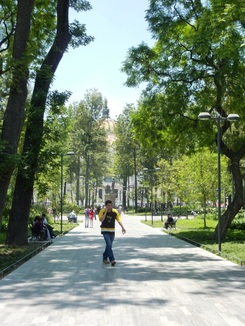 Mexico City’s historical centre is a good place to start, especially if you only have few days. Begin with a stroll around the Alameda Central Park. This tranquil space, shaded by the leafy poplars from which the park takes its name (Alamo meaning poplar in Spanish) and historical buildings, has been the centre of civic life since 1592.
Mexico City’s historical centre is a good place to start, especially if you only have few days. Begin with a stroll around the Alameda Central Park. This tranquil space, shaded by the leafy poplars from which the park takes its name (Alamo meaning poplar in Spanish) and historical buildings, has been the centre of civic life since 1592.
Pass the
El Quemadero with a shudder, where 18th century witches condemned by the Inquisitors were burned, and dive into the little market on the east side of the park.
Circle the 5 classical fountains that punctuate the pathways here. All are French design and sport Graeco-Roman stories. Nowadays cool water flows from these but in 1846 President Santa Anna ordered them filled with alcohol for a celebration. Indeed, this park has always been a place to party for all social classes. In the 1700s it was a popular place for ‘cruising’ and as recently as 2013 saw its paths throng with street vendors by day, by night with prostitutes and drug users. In both cases officials intervened and nowadays its lanes are calm and wifi is available. Indeed, nowadays the wildest things its leafy poplars see are pairs of rambling lovers enjoying the scenery.
The eastern end of this park gives way to the marble heights of the Palacio de las Bellas Artes or Palace of the Fine Arts. This huge, neoclassical construction is the heart of Mexico City’s vibrant arts scene and sees regular events in music, opera, dance and literature. Art fans can find spectacular works by Mexican muralists and the inside of the building is a notable example of art deco architecture. Before going in, walk around the side to admire it from the front.
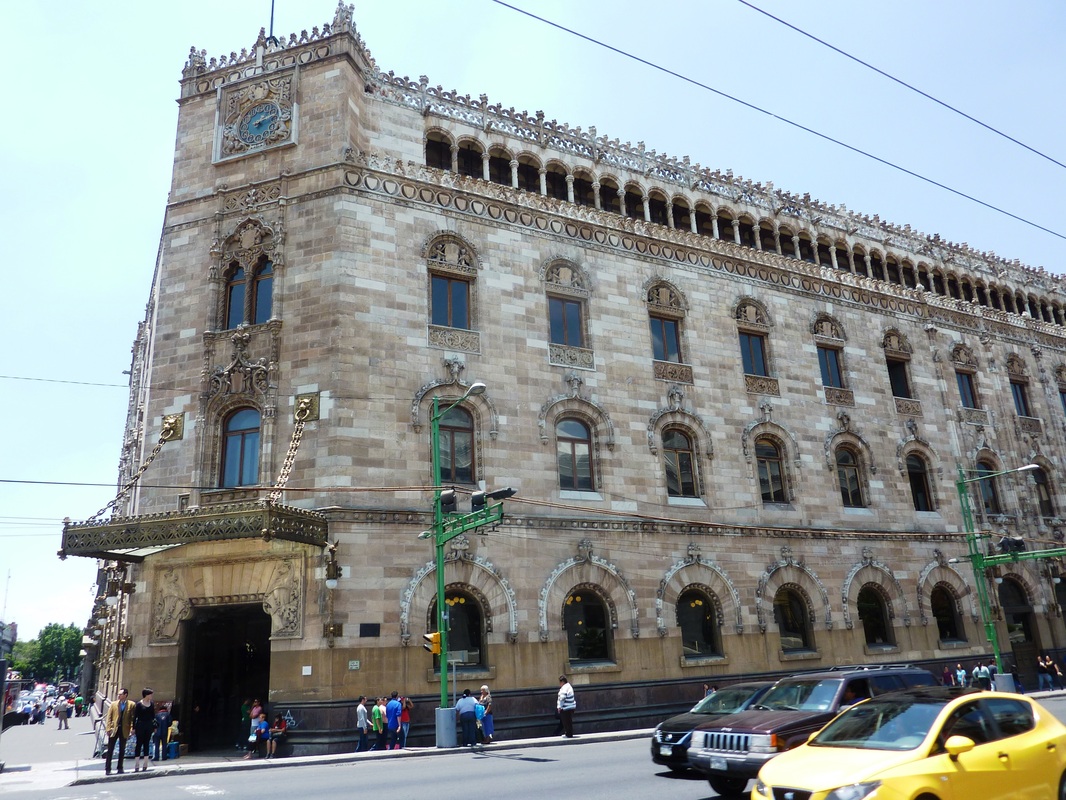
Palacio de Correos de Mexico from across the street
|
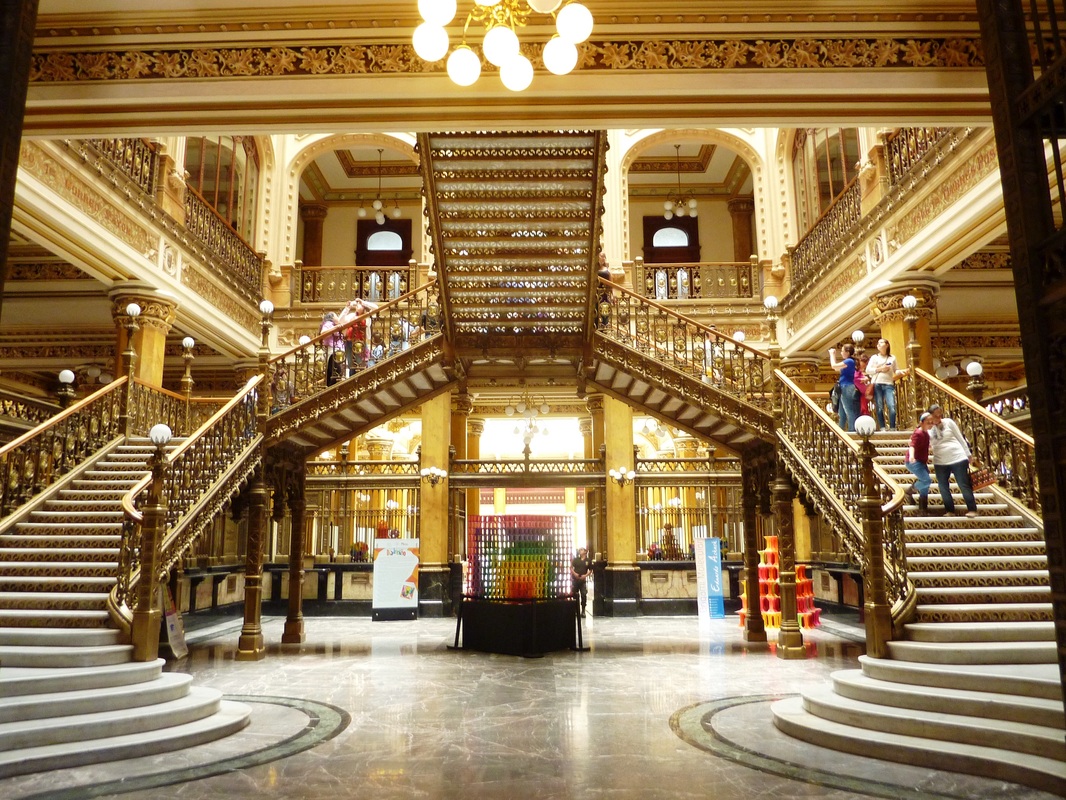
The gilded reception of the Palacio de Correos de Mexico
|
Next, turn the corner to the Palacio de Correos de Mexico…the local post office. This magnificent building is a far cry from your average postie, covering almost an entire block and with 4 floors of marble sculpted, 24 carat gold encrusted decadence. Every window frame, every banister and arch is exquisitely decorated, either with filigree or statues. Discovering all this building’s detail is the work of weeks and at least a cursory wander is a must.
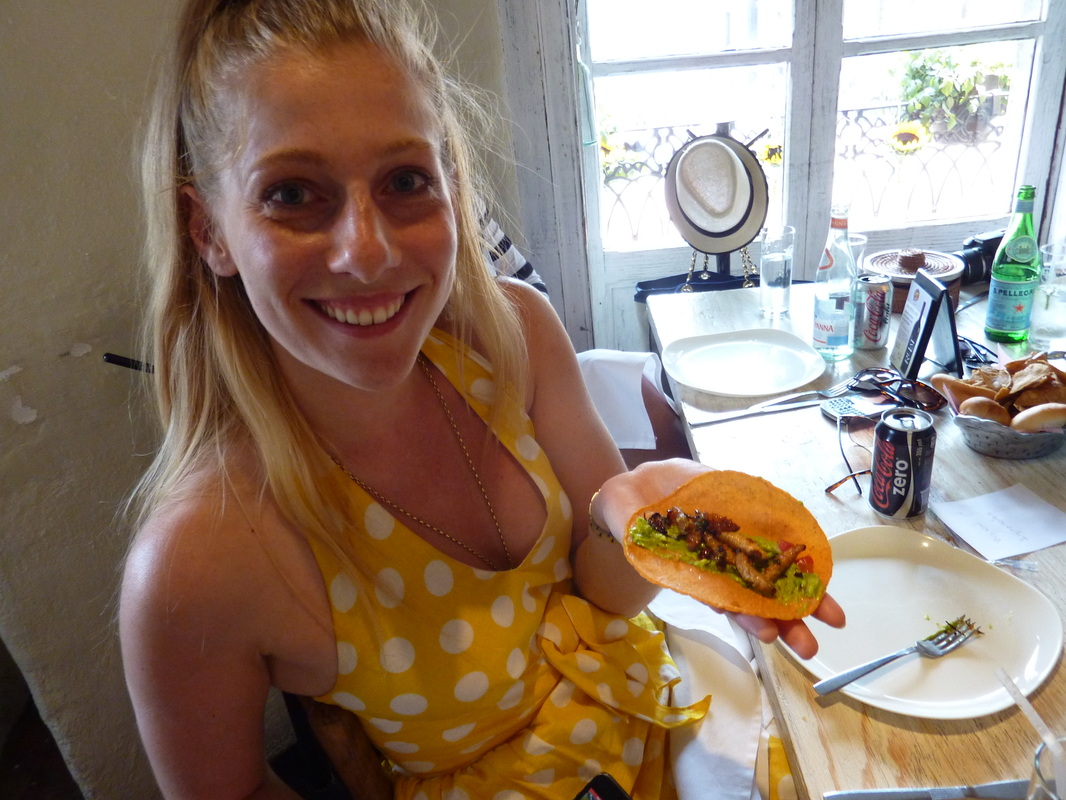 Next door is the National Museum of Art, another grand neoclassical building that could easily occupy a full day. Take a turn around the elegant Plaza Manuel Tolsa which fronts the Museum and watch the artists and performers who gather here. Even better; the Restaurant Los Girasoles overlooks the square. This traditional Mexican restaurant cooks recipes gathered from local women and is the perfect place to cut to the heart of Mexican cuisine whilst enjoying the historic plaza. Be sure to try their pepper stuffed with pork, beef, pecans and parsley. The more adventurous of diners can even try tacos filled with ant eggs, agave worms and tiny fried grasshoppers; apparently traditional fillings in certain regions. Either way, mezcal (a spirit made from roasted agave) must be drunk.
Next door is the National Museum of Art, another grand neoclassical building that could easily occupy a full day. Take a turn around the elegant Plaza Manuel Tolsa which fronts the Museum and watch the artists and performers who gather here. Even better; the Restaurant Los Girasoles overlooks the square. This traditional Mexican restaurant cooks recipes gathered from local women and is the perfect place to cut to the heart of Mexican cuisine whilst enjoying the historic plaza. Be sure to try their pepper stuffed with pork, beef, pecans and parsley. The more adventurous of diners can even try tacos filled with ant eggs, agave worms and tiny fried grasshoppers; apparently traditional fillings in certain regions. Either way, mezcal (a spirit made from roasted agave) must be drunk.
For dessert, head round the corner to the Café de Tacuba. This local institution, opened 1912, used to be part of the nunnery that is still active across the street. All the baked goods served are recipes of the nuns that reside there.
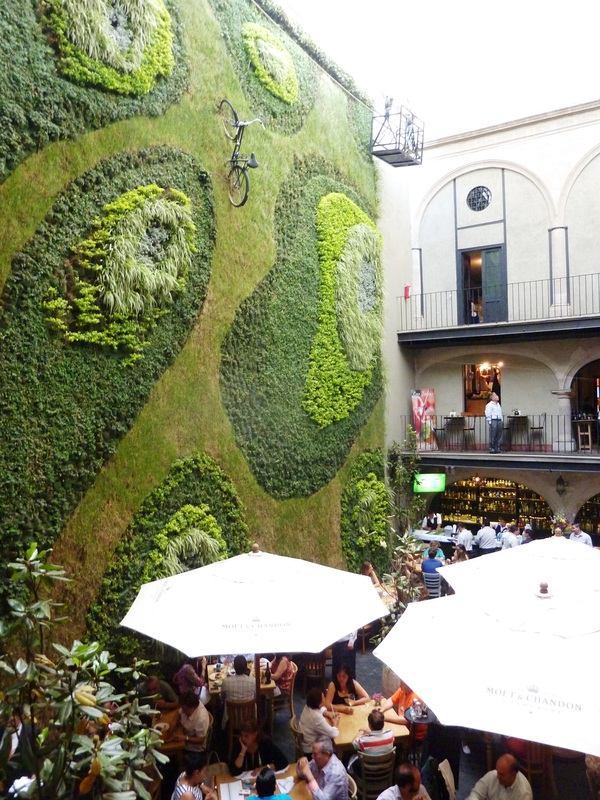
The cool art installation at the Downtown Habita Shopping Centre.
A short hop from here is the bustling pedestrianized Madero Street where you can browse the shops and check out the local jewellery. Most worthy of a potter is the Downtown Habita Shopping Centre, set in a converted colonial 17th century building. This vibrant spot includes a number of top notch restaurants, various art installations and, my favourite, a wonderful chocolate shop. Que Bo!, the brainchild of famous Mexican chef José Ramón Castillo, is a chocoholics dream! Filled with counter after counter of gleaming chocolates and a broad selection of traditional Mexican drinking chocolates, you’ll struggle to drag yourself away.
No trip to Mexico City is complete without a trip to see the wrestling, or lucha libre. This style of free wrestling, characterised by colourful masks and flamboyant aerial manoeuvres, began in the 1860s and has developed its own unique, distinctly Mexican style ever since. Luchadores (the wrestlers) are known by their individual masks and take on characters which fall roughly into 2 categories: the rudos, bad guys, and tecnicos, good guys. Mexican wrestling is tremendously theatrical and can seem outrageous, with fights involving midgets and occasionally homoerotic tropes. Despite some occasional risqué content the tradition has an underlying aim of installing moral principles in the community.
Mexico City is an incredibly alive, culturally vibrant destination. Rich history, epitomised in grandiose architecture and a vast number of museums (2nd only to London), is juxtaposed against a culture that is progressive and fun loving. One could find themselves lost (literally… the city is huge) here for weeks and still not scratch the full surface of what Mexico City can offer to the tourist. I encourage you, visit.
Where to stay: The Marquis Hotel offers spacious and well-equipped accommodation in one of the most convenient locations in town. Check out their spa – the city’s largest – for a relaxing break from the capital’s buzz.
How to get around: Mexico City’s public transport is second to none. In a drive to cut down on congestion, the government recently launched Ecobici, a bike share scheme that is set to be one of the world’s biggest within a couple of years – for next to nothing you can rent these bikes and zip about the city like a local. Although the cycle lanes are spacious and well understood, for inexperienced rides on Sundays the main strip of Pasa de la Reforma is pedestrianized.How to get there: Aeromexico flies 3 times a week from Heathrow to Mexico City with its new luxury Dreamliner Boeing 787s. Business class flyers can enjoy the comfort too of the Sky Team Lounges at both ends – there’s nothing like a free oxygen bar to get an international trip off to a good start!
 Mexico City’s historical centre is a good place to start, especially if you only have few days. Begin with a stroll around the Alameda Central Park. This tranquil space, shaded by the leafy poplars from which the park takes its name (Alamo meaning poplar in Spanish) and historical buildings, has been the centre of civic life since 1592.
Mexico City’s historical centre is a good place to start, especially if you only have few days. Begin with a stroll around the Alameda Central Park. This tranquil space, shaded by the leafy poplars from which the park takes its name (Alamo meaning poplar in Spanish) and historical buildings, has been the centre of civic life since 1592. Next door is the National Museum of Art, another grand neoclassical building that could easily occupy a full day. Take a turn around the elegant Plaza Manuel Tolsa which fronts the Museum and watch the artists and performers who gather here. Even better; the Restaurant Los Girasoles overlooks the square. This traditional Mexican restaurant cooks recipes gathered from local women and is the perfect place to cut to the heart of Mexican cuisine whilst enjoying the historic plaza. Be sure to try their pepper stuffed with pork, beef, pecans and parsley. The more adventurous of diners can even try tacos filled with ant eggs, agave worms and tiny fried grasshoppers; apparently traditional fillings in certain regions. Either way, mezcal (a spirit made from roasted agave) must be drunk.
Next door is the National Museum of Art, another grand neoclassical building that could easily occupy a full day. Take a turn around the elegant Plaza Manuel Tolsa which fronts the Museum and watch the artists and performers who gather here. Even better; the Restaurant Los Girasoles overlooks the square. This traditional Mexican restaurant cooks recipes gathered from local women and is the perfect place to cut to the heart of Mexican cuisine whilst enjoying the historic plaza. Be sure to try their pepper stuffed with pork, beef, pecans and parsley. The more adventurous of diners can even try tacos filled with ant eggs, agave worms and tiny fried grasshoppers; apparently traditional fillings in certain regions. Either way, mezcal (a spirit made from roasted agave) must be drunk.



